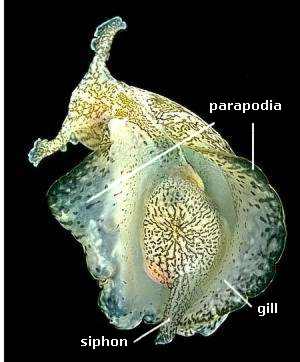Behavioral Neuroscience, lecture on Aplysia Sensory Input for Siphon Withdrawal
Siphon Withdrawal
IV. Sensory Stimulation of Siphon Withdrawal
A. Siphon-gill withdrawal reflex Sensory neurons
1. Cell bodies in abdominal ganglion
a. 24
2. mechanoreceptors in the siphon
a. touch causes distension of receptor membrane
i. stretch receptors
ii. opens Na+ channels
(1) leads to depolarization and action potential
3. axon terminals in abdominal ganglion
a. excitatory
i. Neurotransmitter = Glutamate (Glu)
ii. Glu binds AMPA receptors
(1) often paired with NMDA receptors
b. monosynaptic
i. on 13 motor neurons
(1) projecting to muscles in
gill or siphon
c. also terminals on interneurons (i.e. disynaptic)
i. excitatory - may be Glu
ii. inhibitory - may be GABA
iii. modulatory - serotonin (5-hydroxytryptamine, 5-HT)
B. Tail-siphon reflex seonsory neurons
1. Somata in left & right pleural ganglia
a. 200 neurons, bilaterally symmetrical
2. mechanoreceptors in tail
3. monosynaptic excitatory Glu-AMPA terminals
a. on 3 motor neurons
i. in adjacent ipsilateral pedal ganglia
(1) left pleural to left pedal
ii. project to muscles in the tail
4. excitatory and inhibitory interneurons
a. activate motor neurons in the abdominal ganglion
i. project to muscles on siphon
b. and pedal ganglia
